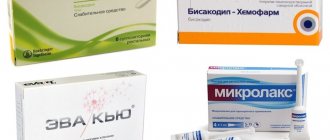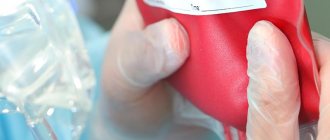June 14 is World Blood Donor Day. According to VTsIOM, over the past 11 years, the number of blood donors in the country has increased from 36 to 45%, with 19% of respondents admitting to donating blood more than three times. As Rossiyskaya Gazeta wrote, there are now 1 million 283 thousand donors in the country, but experts insist: it is not the quantity that is important - the quality of the blood collected, but the number of free regular donors should be 100%. Read about how you donated blood in Soviet times, whether there are risks, benefits, what myths hinder the donor movement, about the specifics of making money “from blood” and the “donor traffic light” in the material of Izvestia.
For the purity of blood: in Russia they want to tighten control over donors
Why the risk of infection during transfusion is inevitable
What is donation
Even our normal daily lives are fraught with danger, not to mention police officers, firefighters, airplane pilots and other professionals whose work is inherently fraught with risks.
No one can guarantee you that today's trip to work will not end in an accident. And then a blood transfusion may be needed. This procedure can save the patient’s life during operations, bleeding, burns, severe injuries, childbirth, anemia, hemophilia, cancer, liver diseases, etc.
It is blood and its components that are important components in the salvation of a person. And they can only be obtained from a living donor - one who voluntarily gives his blood to another.
Despite all the efforts of scientists, at the moment, unfortunately, it is impossible to replace donor blood with artificial one. It exists and even has its advantages, but the disadvantages of artificial blood do not allow its use. Disadvantages include toxicity, too high production costs, and the lack of multifaceted therapeutic effects on the body.
That is why the world so needs to support donation - the voluntary donation of blood and its components in medical institutions for further transfusion to patients in need.
Today there is a shortage of donor blood. And although there is a myth that only a rare group is needed - the fourth, in fact, each is equally important. Yes, there are more donors from the first, second and third groups, but they are needed more often. And if blood is rare, then there are fewer patients who need it.
More than 100 cool lessons, tests and exercises for brain development
Start developing
The first place among the necessary groups is occupied by the second, since it is the most common, which means there is a high probability that there will be a need to use it.
Judging by the AB0 system, which is the most popular, there are 4 blood groups in total: group I - 0, group II - A, group III - B, group IV - AB. Also no less important is the Rh factor, which can be positive or negative.
For a successful blood transfusion, the donor and recipient must be of the same nationality
The statement has nothing to do with reality. The compatibility of the donor and the recipient (the person to whom the blood is transfused) depends solely on the composition of the blood, that is, the presence or absence of certain proteins in it. For transfusion, the compatibility of blood groups (AB0 system) and Rh factor is important. These indicators are distributed almost equally among different races and ethnic groups.
With a suitable protein composition, donor blood can be transfused to the recipient regardless of gender, age or nationality.
Source: depositphotos.com
Types of Blood Donation
In different cases and for different diseases, the patient may need both the blood itself and its components: plasma, red blood cells, platelets and leukocytes. Therefore, there may be a donation of plasma, whole blood or blood cells.
Whole blood is taken in the amount of 450 milliliters. In apheresis, a procedure to remove individual blood components, something specific is taken by separating plasma, platelets, red blood cells, white blood cells or granulocytes from the blood.
The remainder is returned to the donor's bloodstream. Also, saline solution is added to the components returned back, thus helping to normalize the pressure.
More often, doctors need individual components rather than the whole blood itself. Considering that donation is allowed once every 2 weeks, if you donate components 10 to 20 times a year, you can become an honorary donor in 3-6 years. But more on that later.
Plasma donation has its own characteristics. Plasma can be used for up to 3 years after transfusion from a donor. To avoid infection with viruses, it is frozen and stored for six months.
The donor needs to come back to the transfusion station after 4-6 months to get tested and check whether there are any viruses in his blood that did not manifest themselves before donation, but may be in the plasma. If everything is in order during repeated tests, then the plasma can be used.
If the test results are unsatisfactory or if the donor does not come a second time, then the plasma is considered unsafe and is destroyed.
Formally, doctors must notify the donor about the need to re-take tests, and also call him and invite him. But more often they forget about this, so the donor needs to come on his own.
Unlike plasma, red blood cells are stored for no more than a month, platelets can be used for 5 days, and white blood cells can only be used for a day. After the expiration date, all components are disposed of.
Healthiest
Donation... The very name of the procedure sounds somehow soulful, almost musical, from Lat. donare - “to give.” Tatyana Alekseevna Kudryashova began “donating” blood back in 1970. The staff of the Goznak printing house, where 18-year-old Tanya worked, regularly went to donate blood twice a year - in autumn and spring. He says: “Everyone went, and I went out of interest.” But in fact, the reason is much deeper, almost in the blood.
“I was six months old when I fell ill with dysentery and was dying. Then the doctors asked my mother to donate blood. And it was so ingrained in my brain that when the time came, I thought: why don’t I pass? - Tatyana Kudryashova tells Izvestia. “Not only do you get time off, but you also help people.”
donor
“Donor Day” at the Academy of the State Fire Service of the Ministry of Emergency Situations of Russia
Photo: Moscow city news agency/Andrey Nikerichev
They donated blood for free, donors were given sweet tea and cookies and were also provided with lunch. Both then and now there are two days off: on the day of blood donation and the next. Over the course of a year, 8–10 days could accumulate. It happened that hospitals in the area also ran out of blood - they fled there at any time.
A matter of blood
Where to start if you decide to become a donor
“Once I went to the maternity hospital - a woman was dying after giving birth. My blood type matched, it was a direct transfusion: they lay down next to each other on the bed and the blood immediately flowed through the tube. The woman survived,” recalls Tatyana Alekseevna. “There was no talk about HIV then, so the blood was checked for syphilis, tuberculosis and hepatitis. We were not afraid of getting infected with anything. Even in Soviet times, there were disposable systems: a bag containing a needle and syringe was opened in front of you, and no one used this system for the second time.”
Tatyana Alekseevna spent her honestly accumulated “blooded” days in the winter (there were no New Year holidays in Soviet times) - she took her son and went skiing. There was good health! Just right to share with someone.
“When you donate blood, you feel a state of vigor, even some kind of euphoria,” says Tatyana Kudryashova. - We all came out happy. By the evening, of course, we were tired, but no painful condition. Everyone who donated blood did not have any problems with blood pressure for a very long time. And another plus, from my own experience: I once got sick, there was a lot of blood loss, but I tolerated it well because my body got used to it.”
donor
Badge "Honorary Donor of the USSR"
Photo: auction.ru
Doctors gave advice on donating blood
In 1991, when more than 40 gratuitous donations had accumulated, Tatyana Alekseevna was awarded the sign “Honorary Donor of the USSR”: a monthly 35 kW for electricity as a gift, a 50 percent discount on utility bills, free travel on public transport and an annual payment of slightly more 14 thousand rubles. In addition, the state provides 50 percent discounts on medicines and free dental prosthetics. Honorary donors of Russia have the same benefits.
Requirements and contraindications for donation
Less than a year ago, a new order of the Ministry of Health came into force, according to which some points regarding absolute and temporary contraindications for donors were changed.
First, let's look at absolute ones. People who have:
- Syphilis, HIV, tuberculosis, hepatitis B and C.
- Blood diseases, stage II–III hypertension and other diseases of the cardiovascular system.
- Psoriasis, eczema, furunculosis and other skin diseases.
- Lack of hearing, speech or vision, as well as myopia greater than minus 6 diopters.
- Mental disorders that are dangerous for the patient himself and the people around him.
- Achilles gastritis, calculous cholecystitis, liver cirrhosis.
- Kidney damage and urolithiasis.
- Bronchial asthma, emphysema.
- Radiation sickness.
- Amputation, organ removal or transplantation.
- Diseases of the nervous system.
- I and II disability groups.
- Oncological diseases.
And now temporary. Citizens who meet one or more of the following points cannot be a donor:
- Age less than 18 years.
- Pulse less than 55 or more than 95 beats per minute.
- Hemoglobin is less than 140 g/l.
- Blood pressure: upper less than 90 and more than 149 mm Hg. Art., lower less than 60 and more than 89 mm Hg. Art.
- Body temperature is above 37 degrees.
- Body mass index is less than 18.5 and more than 40.
- Less than a year ago, an exacerbation of a stomach or duodenal ulcer was relieved.
- Less than 12 months have passed since vaccination against rabies, less than a month against plague, tuberculosis, smallpox, rubella, hepatitis B, COVID-19, less than 10 days against tetanus, diphtheria, whooping cough, cholera, influenza.
- Pregnancy or less than 3 months after lactation.
- Less than 4 months have passed since the operation, including the abortion.
- Medical and cosmetic procedures such as acupuncture, tattooing, piercing, etc. Must be completed over 4 months.
- Less than 4 months ago there was last contact with carriers and patients with HIV, hepatitis B or C, and syphilis.
- The allergic disease lasted for less than 2 months in the acute stage.
- Less than a month has passed since recovery from infectious diseases and acute or chronic inflammatory processes in the acute stage.
- Less than 2 weeks have passed since the last antibiotic intake, and less than 3 days have passed since taking analgesics, anticoagulants and antiplatelet agents.
- The last use of alcohol was less than 2 days ago.
Previously, there were restrictions regarding menstruation and tooth extraction. It was necessary to wait 5 and 10 days respectively. The new law removed clauses about this. There is also no longer any restriction related to the question of up to what age one can be a donor. Therefore, you can come for a donation even at the age of 60, if your health allows it.
It is also often asked whether women who are taking birth control are allowed to donate. And the answer is: yes, you can. But under no circumstances should pregnant women undergo donation.
If you are not completely clear about who can and cannot be a donor, and also doubt whether you are suitable for this, just call the transfusion station in your city. Doctors will answer your questions and help.
Benefits for the body
Taking 450 ml of blood (or 200 ml - half the dose) should not have any impact on the life of a healthy person. True, for this the donor must be rested. To maintain good health, a person must have breakfast before the procedure. After blood donation:
— the liver and spleen are unloaded, because they are responsible for the disposal of dead red blood cells;
- immunity to minor blood loss that occurs during operations, accidents, injuries, wounds, and severe burns is developed;
- the hematopoietic function is activated, the blood self-renews.
In addition, donation is a prevention of many diseases of the digestive system and cardiovascular system.
Preparing for a transfusion
When preparing to donate blood, you must remember that one day before and on the day of donation, you must exclude fried, fatty and smoked foods from your diet. You can't eat spicy food either. It is also not recommended to consume the following products:
- sausages, frankfurters, sausages and other similar products;
- mayonnaise;
- sunflower and butter;
- drinks that contain coloring substances;
- bananas;
- nuts and seeds;
- avocado;
- chocolate;
- dairy products;
- eggs.
Alcohol should be avoided 2 days before donation.
You should definitely have breakfast: drink sweet tea, you can replace it with compote or fruit drink, eat porridge or pasta with water, vegetables and fruits, in addition to those listed above, an apple is best. From flour, bread, ordinary cookies without additives or crackers are preferable.
You should not come for donation after working the night shift or if you have insomnia. On the contrary, you need to get a good night's sleep. If you feel unwell in the morning, it is better to completely refuse donation that day.
Avoid physical activity at least 24 hours before the procedure. And you should refrain from smoking for an hour.
Possible benefits for the body
Just a couple of years ago, many were interested in blood donation solely as an opportunity to earn extra money. But the introduced changes to the legislation made this procedure free of charge. Therefore, now most people become donors solely to help sick people.
When assessing the pros and cons of blood donation, we must remember that sometimes a transfusion is the only way to save a dying person. But this is not the only positive point. The undeniable advantages of donation include the following:
— free medical examination, which is carried out during each blood sampling procedure;
— constant renewal of the body: it was found that donors are less likely to suffer from cardiovascular diseases, and women experience menopause later;
— strengthening the immune system, adjusting the functioning of some internal organs, including the gastrointestinal tract.
But this is not all the advantages of blood donation. A person who decides to do this must lead a healthy lifestyle and monitor his diet. After all, the blood of people who abuse alcohol and depend on nicotine is unlikely to be needed by anyone.
Blood donation process
To get to most blood transfusion stations, you must make an appointment in advance. Therefore, before coming in person, call and clarify this issue at the reception.
It is easier for the body to adapt to changes and tolerate blood loss in the morning. Therefore, donors, especially beginners, are advised to arrive for the procedure before 12:00. After this time, experienced donors usually come.
The first visit to the blood collection station may take a little longer, as first-timers must fill out several documents.
First of all, you need to register. To do this, you need a passport; men may also be asked to provide a military ID. Foreigners must provide a residence permit or temporary residence permit.
After this, the donor fills out a questionnaire in which he must provide the following information regarding his health:
- general well-being;
- past infectious diseases;
- contact with infectious patients;
- trips abroad;
- use of narcotic and psychotropic substances;
- vaccinations;
- surgical interventions and much more.
Answers must be given honestly, otherwise both the donor and the patient who will receive the transfusion may suffer.
Next comes the turn of clinical and laboratory examination. It consists of:
- examination by a doctor, during which blood pressure, temperature, pulse are measured, the skin is examined, weight and height are measured, and the general well-being of the donor is determined;
- determination of blood type and Rh factor (the procedure is mandatory only for beginners; when donating again, this step is skipped);
- general blood test;
- determination of hemoglobin level;
- detection of HIV, syphilis, hepatitis B and C.
All information provided by donors is confidential. In addition, the results of the examination remain secret from outsiders and can only be obtained by the donor himself.
Before the actual transfusion procedure, the donor is escorted to the dining room, where he is offered sweet tea and cookies. And after this, the blood collection procedure itself begins.
As I already wrote, the total volume of collected blood is about 450 ml. Usually donation does not cause pain, burning or other painful or painful sensations. Although everything is very individual and depends on the sensitivity of the person. Some people may feel slightly dizzy.
But more often the donor feels a small prick and that’s it. According to most people, collecting blood from a vein is not as unpleasant as collecting blood from a finger.
But if illness occurs, it is most likely caused by a decrease in blood pressure due to a decrease in hemoglobin levels. A healthy body easily copes with this and does not experience significant changes in well-being.
The procedure takes place in a special inclined chair. Before inserting a needle into a vein, the skin is disinfected. The blood flows through the tube into the container. Donating whole blood takes no more than 15 minutes, collecting plasma takes about half an hour, and collecting other components can take up to 2 hours.
Harm
Donation itself is safe and cannot harm a healthy human body. According to studies, problems associated with blood withdrawal occurred in only 2 out of 1000 people and they were associated with a vomiting state provoked by a sharp drop in blood pressure.
However, risks of donation exist and are associated:
- With the development of iron deficiency anemia caused by a decrease in hemoglobin levels after blood sampling. Good nutrition and inclusion of iron-containing foods in the diet will help prevent this pathology.
- Deterioration of capillary permeability occurs with regular bloodletting and can worsen the blood saturation of a person’s lungs.
- Increased risk of developing neoplasms. A decrease in red blood cells causes their active division and, at the same time, can provoke the growth of atypical cells. This theory has its place, but has not been proven until now.
- Associated with a decrease in the required amount of fluid in the body, donation is accompanied by a decrease in physical blood pressure indicators, which is especially contraindicated for people suffering from hypertension.
Actions after the procedure
Immediately after donation, you should not make sudden movements. You need to get up carefully, and it’s better to even sit or lie down for 10–15 minutes. The legs should be raised.
It is normal to feel slightly dizzy and weak. Don't worry - they will pass soon. But if you don’t feel well and get worse, immediately call the medical staff and tell them you’re feeling unwell. Other donors, on the contrary, feel a surge of strength and vigor.
A bandage will be placed over the area where the needle was inserted. Do not remove or wet it for at least 3 hours to avoid bruising.
You should not smoke for the first couple of hours. You should not shower on this day. Also, do not play sports and avoid physical activity for 2 days. There are also restrictions regarding vaccinations: they can only be done after 10 days.
In general, blood restoration is a short process. It takes about a month, sometimes a little more. But individual components are renewed in different ways: red blood cells will be restored in a month or a month and a half, leukocytes and platelets need a week, and plasma will be completely restored in a couple of days.
To speed up the process, you need to eat properly and regularly. Be sure to drink plenty of fluids and eat more protein. But you should give up alcohol for at least 2 days.
Myths and rumors
There are many myths about the dangers of blood donation for the body that scare people away. The most common rumor is that during the procedure you can become infected with incurable diseases. This is not true, since moments of sterility at blood donation stations are taken very seriously. When collecting, only disposable sterile instruments are used; they are opened right in front of the donor’s eyes.
Many people fear that donation is harmful. The volume of blood taken from the body is restored very quickly. In fact, the procedure, on the contrary, is very beneficial for health if all the rules are followed.
On a note! Also, do not be afraid that the procedure takes a lot of time. The collection process is organized in such a way as to avoid long queues. The fence takes no more than 15-20 minutes.
How often can you donate blood?
Men are allowed to undergo up to 5 donations per year, women even less - up to 4 times. In this case, at least 2 months must pass between two blood donations. And after 5 regular donations, you need to take a break for 3 months or more.
But if you donate only plasma, the period is significantly reduced: the procedure can be repeated again 2 weeks after the last donation. But you cannot donate plasma more than 20 times a year.
It will not be possible to undergo the procedure ahead of schedule, since each donor, as well as all his visits to the blood collection station, are noted in a single register. Violating the instructions is harmful to the donor’s health, since his body will not have time to recover before the appointed time.
How much blood is taken when donating for men and women?
Male donors donate no more than 450 ml of biological fluid at a time. Such a loss is considered insignificant and safe for the body. For women, the norm is slightly lower - 350 ml. Before the procedure, donors of both sexes will have to give a little more blood for mandatory testing.
When donating plasma or platelets, the collection rate increases to 600 ml. At the end of the procedure, the device returns “excess” biological fluid to the body, having previously removed the necessary components from it.
Important! The norm for hemoglobin in women for blood donation is considered to be 120-150 g/l, and in men - 130-160 g/l.
Where to look for blood collection points
Regional centers and large cities most often have their own blood collection centers. Anyone wishing to become a donor can contact these institutions to find out whether they can be helpful, who should not undergo the procedure, how to undergo an initial medical examination, what needs to be done to become a donor, where to go, etc.
Typically, the requirements for future donors are standard everywhere, so there shouldn’t be any special problems.
To find out if there are suitable centers in your city and where they are located, use the DonorSearch web platform. This is a major project uniting Russian donors.
In addition, the Blood Service service will be useful, where you can find up-to-date information about donation and operating blood collection stations, as well as the official website of the Podari Zhizn Foundation, where you can find information about charitable events related to blood donation.
List of diseases that are absolute contraindications
Before donating your blood, you need to figure out whether blood donation will harm your body. The disadvantages for the body will be obvious if you suffer from or have a history of diseases that are included in the list of absolute contraindications. These include the following:
- Parasitic infections: leishmaniasis, guinea worm, trypanosomiasis, toxoplasmosis, filariasis, echinococcosis.
- Cardiovascular problems: coronary heart disease, heart disease, atherosclerosis, obliterating endarteritis, recurrent thrombophlebitis, myocarditis, atherosclerotic cardiosclerosis, endocarditis.
- Respiratory diseases: obstructive bronchitis, pulmonary emphysema, bronchiectasis, stage of decompensation of diffuse pneumosclerosis, bronchial asthma.
- Gastrointestinal diseases: peptic ulcer, Achilles gastritis.
- Problems with the liver and biliary tract: liver cirrhosis, calculous cholecystitis, accompanied by recurrent attacks and manifestations of cholangitis, chronic liver diseases.
- Diseases of the urinary tract and kidneys: urolithiasis, focal and diffuse kidney damage.
Benefits, privileges and payment
In order for the medical sector to be fully provided with donor blood and its components, it is necessary to have more than 40 donors for every 1,000 people.
Unfortunately, there is now an acute shortage of donors and their blood. In order for as many people as possible to become involved in this activity, the state has taken measures to provide social support for donors.
Firstly, after donation, you are issued a coupon for free food or monetary compensation in the amount of 500–1,000 rubles. It is impossible to say the exact figure, as it varies depending on the region.
Secondly, the donor is issued a certificate, thanks to which you can count on 2 days of leave while maintaining your earnings. This document must be given to the employer, and he has no right to refuse.
Moreover, the law allows you not to notify your boss about donating blood, and then simply bring the certificate to the accounting department. But I wouldn't advise you to do that! It is better to negotiate peacefully with your superiors.
If you donate blood on an ongoing basis, collect certificates and do not spend time off right away, you can accumulate up to 3 weeks of days off and extend your vacation. You cannot replace time off with monetary compensation.
Thirdly, you can donate blood for money. This can be done in public or private clinics, but not in all. Typically, rewards are offered to donors who have a rare blood type. You can find out about the payment amount and conditions directly at the transfusion station itself.
On average, donation is paid at the following rate:
- Whole blood – from 1,000 to 2,000 rubles.
- Plasma costs about 2–4 thousand rubles.
- Red blood cells – 5,000–6,000 rubles.
- Platelets from 7,000 to 9,000 rubles.
Fourthly, you can receive the status of an honorary donor.
Past illnesses
Restrictions on blood donation are established in cases where a person has had infectious diseases. In order for him to become a donor, he must not only fully recover, but also wait out a certain quarantine period.
For example, if you have had malaria (provided that the results of immunological tests are negative and there are no symptoms), 3 years must pass from the date of recovery. For typhoid fever, this period is 1 year. After suffering from ARVI, flu or tonsillitis, you must wait at least a month.
For other infectious diseases not listed above, the quarantine period is slightly longer – 6 months. After tooth extraction, you must wait 10 days before donating blood. After acute inflammatory processes, recovery lasts at least 1 month.
Restrictions are also imposed on people suffering from allergic diseases. After acute attacks have stopped, at least 2 months must pass.
Honorary donor status
In order to become an honorary donor, you must donate at least 40 times if you are talking about donating whole blood, and at least 60 times if you are donating plasma. Considering the number of possible donations per year, it will take from 3 to 10 years to obtain status.
It is important to donate blood without receiving compensation for donation. This is a mandatory rule. All cases where the donor received money for the procedure are not counted.
After the donor has a sufficient number of donations, he fills out an application and after a couple of months receives a certificate with an honorary donor badge.
What privileges can he count on:
- for the annual state payment, which depends on the cost of living, the payment now amounts to 15,108 rubles;
- for skip-the-line service at government agencies;
- a 50% discount on the purchase of drugs at a pharmacy with a prescription;
- on vacation at a time convenient for the donor;
- for priority receipt of discounted vouchers to sanatoriums.
You can also receive the status of an honorary donor of Moscow. To do this, you need to donate blood only in this city. The requirements in this case are somewhat simpler: it is enough to donate whole blood 20 times or plasma 30 times. Once the donor has an identification document confirming his status, he will need to donate blood and plasma at least 3 and 7 times annually, respectively.
This status implies the presence of its own benefits: free travel on public transport and a 50% reduction in payments for housing and communal services.
You can be an honorary donor to both Moscow and Russia at the same time.
The personal qualities of the donor can be transferred to the recipient
Prejudice has very ancient roots. It is consonant with the ideas of primitive people that by eating the organs of an enemy, one can acquire his strength, courage, intelligence and other wonderful qualities. A similar misconception existed in the Middle Ages, when blood was considered to carry part of the human soul.
In fact, a blood transfusion does not add any of the donor's personal qualities or abilities to the recipient. It can only aggravate health problems if an unscrupulous donor allowed himself to donate blood without giving up bad habits. The reason here is not the transmission of information encrypted in the blood, but the fact that breakdown products of nicotine, alcohol and other toxins that can cause harm to health can enter the recipient’s bloodstream. That is why the donor must be very responsible, and the medical staff must be attentive.
Harms and benefits of donating blood
Another important question for future donors: is it harmful to be a blood donor? No, donation is absolutely safe for a healthy body.
The body’s recovery occurs quite quickly - within a month the blood will be completely renewed. But even until this moment a person will not feel any special changes. And over time, regular donors develop resistance to bloodletting.
Some people believe that you can get an infection during the procedure. But that's not true. When donating blood, only disposable and sterile instruments are used. And before a catheter is inserted into the donor, his vein is disinfected.
Safety measures are also observed at blood collection points. Doctors strictly follow all the rules, carry out sanitary treatment before donations, walk only in shoe covers, and use disposable instruments.
If the donor becomes ill during the procedure, doctors provide assistance. Also, if necessary, donation can be interrupted at any time.
We figured out that there is no harm to the body. And now another question: is it useful to donate blood?
Studies show that donors are several times less at risk of heart attack and heart attack. Also, thanks to the procedure, the body learns to more easily adapt and adapt to any extreme situations, which has a positive effect on health.
In addition, the immune system is strengthened, metabolism is improved and life expectancy increases.
Absolute contraindications
Unfortunately, not all people who want to help others can become donors. Contraindications to blood donation are very extensive. The list includes not only infectious diseases such as AIDS, immunodeficiency virus, various types of viral hepatitis, tuberculosis, but also somatic diseases.
The list of contraindications includes people who:
- malignant neoplasms;
- diseases of the central nervous system;
- mental illness;
- lack of hearing and voice;
- radiation sickness;
- endocrine diseases accompanied by severe metabolic disorders;
- connective tissue problems;
- there is an addiction (they suffer from alcoholism or are drug addicts);
- blood diseases;
- acute or chronic form of osteomyelitis.
But this is not a complete list. In each specific case, only a doctor should determine whether a person can become a donor. For example, blood donation is contraindicated if there is a history of surgery. If during the operation a resection of the stomach, gallbladder, uterus, or spleen was performed, then such a person will never be able to donate blood. And if he just had his appendicitis removed, then he can become a donor in 6 months.











